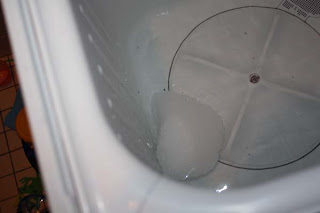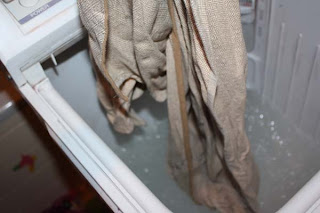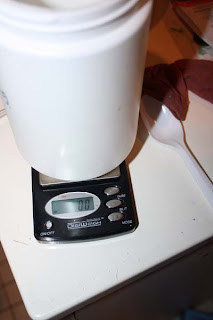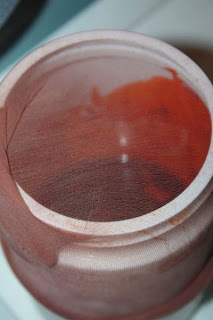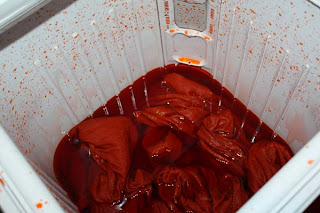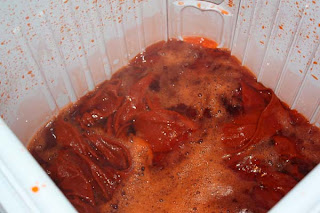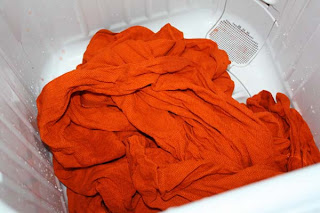
Finally, some fibre all spun up and ready to use :)
I bought this fibre at the Old Bus Depot Markets on Wool Day a few months ago. Isn't it GORGEOUS?!?!?
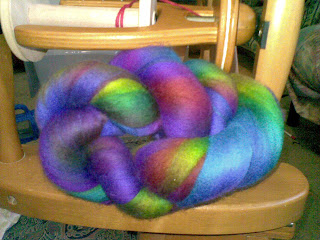
 So I spun it up with lots of air, so that it can be a nice soft beannie for the new Monkey. I then plied (my first ever ply!) it with some rayon machine embroidery thread in a beautiful purple, making it look like this
So I spun it up with lots of air, so that it can be a nice soft beannie for the new Monkey. I then plied (my first ever ply!) it with some rayon machine embroidery thread in a beautiful purple, making it look like this
 Nice! I have spun up a second bobbin of this opaly merino roving, and plied most of it. It is on the niddy noddy as I type, and the rest of the bobbin will be plied hopefully tonight. Then on the niddy noddy, in for a wash, a dry and then to crochet a little Monkey hat. Awwww!
Nice! I have spun up a second bobbin of this opaly merino roving, and plied most of it. It is on the niddy noddy as I type, and the rest of the bobbin will be plied hopefully tonight. Then on the niddy noddy, in for a wash, a dry and then to crochet a little Monkey hat. Awwww!




